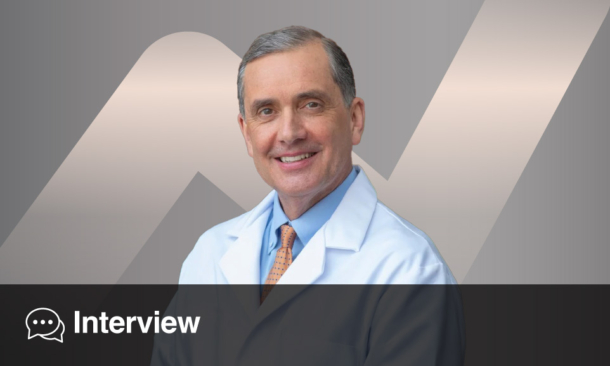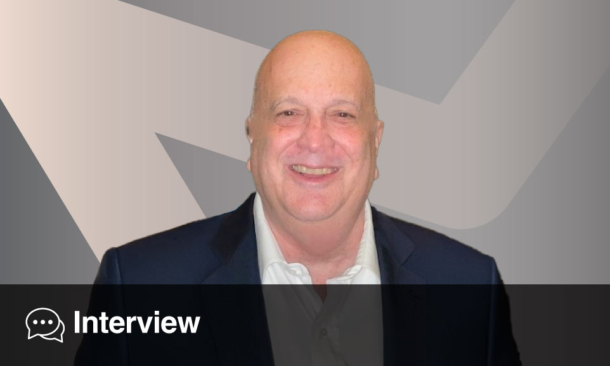Author: Victoria Antoniou, EMJ, London, UK
Citation: EMJ Rheumatol. 2024;11[1]:26-28. https://doi.org/10.33590/emjrheumatol/BAHU2014.
![]()
THIS year’s European Alliance of Associations for Rheumatology (EULAR) Congress took Vienna, Austria by storm, with a multitude of fascinating sessions taking place between 12th–15th June. Not least among them was the insightful ‘Bench to Bedside’ session on Sjögren’s syndrome, expertly chaired by Hendrika Bootsma, University of Groningen, the Netherlands; and Fai Ng, Newcastle University, UK. This session addressed new developments and hypotheses on the pathogenesis of Sjögren’s syndrome, along with novel methods for assessing disease activity and future treatments based on new pathogenic mechanisms.
PATHOPHYSIOLOGY OF SJÖGREN’S SYNDROME
Frans Kroese, University Medical Centre Groningen, the Netherlands, introduced Sjögren’s syndrome as the second most common rheumatic systemic autoimmune disease, affecting approximately ten times more women than men. Sjögren’s syndrome is typically characterised by the presence of sicca symptoms, caused by a dysfunction in the lacrimal and salivary glands. Extraglandular manifestations are also present in many patients, of which fatigue is the most common. The pathogenesis of this disease is not fully understood, however, and there is no approved treatment as of today.
As explained by Kroese, some vital aspects of the pathogenesis of Sjögren’s syndrome are understood. The presence of lymphocytic infiltrates in salivary and lacrimal glands, for example, is known, and studies have highlighted the importance of antigen presentation and B cells in this pathogenesis. Kroese went on to describe how lymphocytic infiltrates are frequently considered responsible for the dysfunction in the glands, and therefore the reduced saliva and tear production in patients: a hypothesis that he challenged. “There is an extremely poor, if (there is one) at all, association between the number of infiltrates and the saliva production,” Kroese emphatically pointed out, highlighting research that demonstrated the lack of correlation between the focus score in the labial gland and the amount of saliva production stimulated.1 However, the number of infiltrates in the parotid glands does indeed show a correlation to saliva production.1 It is for these reasons that Kroese emphasised the need for analysis of salivary glands without infiltrates in patients with Sjögren’s disease. In doing so, he hopes to be able to better understand the early stages of pathogenesis of this syndrome.
He went on to describe an as of yet unpublished study which assessed the cells of patients with Sjögren’s disease without lymphocytic infiltrates. The expression of genes was shown to be dysregulated in the acinar cells of these patients. Further research additionally demonstrated that the mitochondria were also affected in patients with Sjögren’s disease.2 Kroese discussed his research analysing the activation of fibroblasts, whose trigger is unknown, but which then produce CXCL chemokines and extracellular matrix components, activating T cells. This process then transforms functional acinar cells into dysfunctional acinar cells, leading to impaired saliva production, he explained, as well as damage to the mitochondria. This then leads to the formation of lymphocytic infiltrates, which contribute to impaired saliva production; however, this research shows that they may not be the initiating factor.
Kroese and colleagues’ research plays a vital role in understanding the pathogenesis of Sjögren’s syndrome, which until recently has not been well understood. Though the full story is not yet revealed, this analysis has shed light on a new model for considering the factors contributing to the disease.
ASSESSING TREATMENT EFFICACY OF SJÖGREN’S SYNDROME
Raphaèle Seror, Université Paris-Saclay, France, took to the stage to discuss the treatment of Sjögren’s syndrome, and the various considerations when assessing treatment efficacy. She introduced the key points that must be taken into account when assessing drug efficacy, namely key inclusion criteria, key non-inclusion criteria, and primary outcome. Seror then provided a comprehensive overview of how to define the target population and how inclusion criteria might be challenged, ensuring patients can be included despite restrictions of inclusion criteria. Seror additionally discussed the main challenges of choosing a primary endpoint; in particular, capturing all disease features while remaining sensitive to change and ensuring it is suitable for all patients. One of the most crucial aspects of assessing treatment efficacy and designing a study is listening to patients’ needs. Whilst understanding the expectations and unmet needs of patients during clinical trials can often be difficult, it is, however, absolutely necessary when examining drug efficacy, ensuring no patients feel neglected.
CURRENT AND FUTURE TREATMENT
With the first two talks in mind, Thomas Dörner, Charité Universitätsmedizin Berlin, Germany, looked to the current treatment landscape of Sjögren’s syndrome and how it may continue to develop in the future, addressing the various guidelines that are provided to clinicians for treatment.
The treatment of sicca symptoms is well established, with options such as tear drops or artificial tears for dry eyes, and H2O supplements or artificial saliva for dry mouth, being commonly understood and available.3 Treatment of systemic manifestations, such as fatigue or arthralgia, is less understood, pointed out Dörner, and clinicians often must turn to their knowledge of other rheumatic diseases, using non-steroidal anti-inflammatory drugs (NSAID), glucocorticosteroids, immunosuppressives, or hydroxychloroquine, to name a few. There are now certain recommendations, provided by EULAR, that assist treatment, based on individual organ manifestations, which then must be further tailored to each patient.
Many trials to treat Sjögren’s disease have failed, often due to a lack of appropriate outcome measures. As a result, Dörner elaborated, the future of trials in Sjögren’s syndrome must be altered. He explained that the three main challenges in disease treatment are sicca symptoms, extraglandular manifestations, and constitutional symptoms, particularly fatigue. The first potential future mechanism for treatment of Sjögren’s disease discussed by Dörner is none other than dual anti-B cell therapy. By depleting B cells in this therapy, the impairment of saliva production was reduced.4 The clinical response was positive when this technique was trialled, with treated patients showing a significant change in baseline compared to the placebo group.4 Similar results were shown with other therapies that do not deplete B cells but block their intracellular signalling pathway; over 24 weeks, the EULAR Sjögren’s syndrome disease activity index (ESSDAI) separated well from baseline, and treated patients showed significantly increased levels of unstimulated salivary flow.5
Dörner went on to describe other novel therapies for treating Sjögren’s; for example, therapies which block CD40 or CD40L (CD154). He analysed the efficacy and safety of these methods, emphasising the effect on ESSDAI, and highlighting the potential for future treatments to address extraglandular symptoms as well as sicca. At the moment, the medical need for patients with Sjögren’s remains high, but with all the innovative treatments being developed, Dörner was hopeful that this would not be the case in the future.
FINAL TAKEAWAYS
The eye-opening session that had taken a captive audience through the pathophysiology of the disease, how to design a study to effectively analyse new treatments for Sjögren’s, and what the future may hold for patients, not only in terms of treating sicca symptoms, but also extraglandular symptoms, came to a close with a final presentation from Pierre-Marie Duret, Hôpitaux Civils de Colmar, France, who briefly described his research on lymphoproliferative disorders complicating Sjögren’s disease. His talk completed this extensive look at Sjögren’s, its complications, origins, and how to treat it.
This session presented at EULAR provided a detailed analysis of Sjögren’s, shining light on many factors, perhaps most importantly highlighting the future treatments from which patients might one day benefit, as a result of our deeper understanding of the disease.







